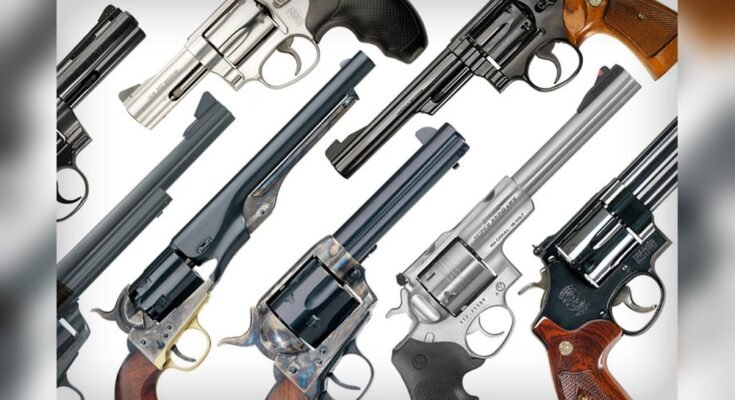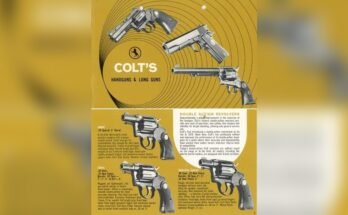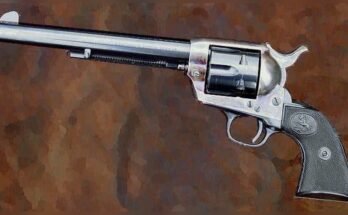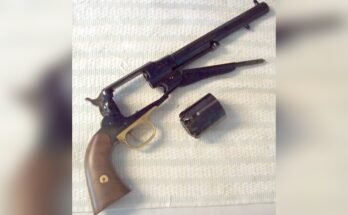Are you curious about revolvers but don’t know where to start? Understanding the different types of revolvers can help you make smarter choices, whether you’re a collector, a shooter, or just someone wanting to learn more.
You’ll discover the main revolver styles, how they work, and what makes each one unique. By the time you finish reading, you’ll feel confident talking about revolvers and know exactly which type fits your needs. Let’s dive in and explore the world of revolvers together.

Single-action Revolvers
Single-action revolvers are among the oldest types of handguns. They have a classic design and simple mechanism. These revolvers require the shooter to pull the hammer back before each shot. This action “cocks” the gun, preparing it to fire. Many gun enthusiasts appreciate single-action revolvers for their historical value and traditional feel.
Mechanism And Operation
In single-action revolvers, the hammer must be manually cocked for every shot. Pulling the trigger releases the hammer to strike the firing pin. This action fires the bullet from the chamber. The cylinder rotates only when the hammer is cocked. It holds multiple rounds and lines them up one by one.
This mechanism is simple but requires more effort than other revolvers. Shooters must cock the hammer before each trigger pull. This slow firing process can improve accuracy and control.
Popular Models
The Colt Single Action Army is one of the most famous models. Known as the “Peacemaker,” it was widely used in the American West. Ruger also makes popular single-action revolvers like the Ruger Vaquero. These guns are often used for cowboy action shooting and collectors.
Other notable models include the Smith & Wesson Model 3 and the Uberti replicas. These guns maintain the old style with modern quality.
Advantages And Drawbacks
Single-action revolvers offer simplicity and reliability. Their design is easy to maintain and repair. The slow firing rate helps new shooters aim carefully. Many find the trigger pull smooth and light after cocking.
On the downside, single-action revolvers are slower to shoot. Cocking the hammer takes extra time and effort. They also lack the speed and ease of modern double-action revolvers. For self-defense, faster firing guns may be better.
These revolvers shine in target shooting and historical reenactments. They combine tradition with straightforward operation.
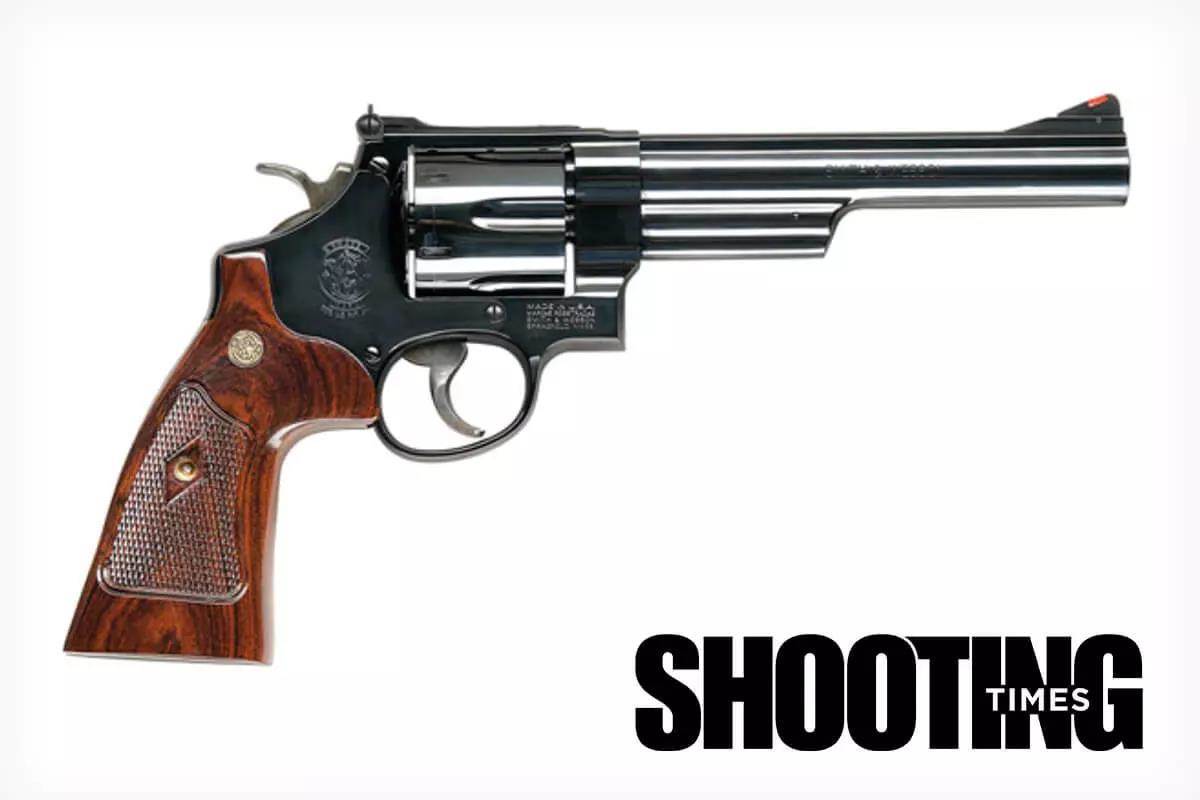
Double-action Revolvers
Double-action revolvers are popular firearms known for their quick firing ability. They allow the shooter to fire by just pulling the trigger. This design combines cocking and firing into one smooth motion.
This type of revolver is easy to use and often preferred for self-defense and law enforcement. Their mechanism makes firing faster than single-action revolvers. Understanding how they work helps you see their value.
How They Work
Double-action revolvers use a trigger that both cocks and releases the hammer. Pulling the trigger rotates the cylinder to align a new round. The hammer then strikes the firing pin, igniting the bullet. No need to manually cock the hammer before each shot. This design allows faster shooting with less effort.
Common Variants
There are two main variants: double-action only and traditional double-action. Double-action only models cannot be cocked manually. Traditional models let you cock the hammer for a lighter trigger pull. Many popular revolvers combine both actions for versatility. This choice depends on user preference and shooting style.
Pros And Cons
Double-action revolvers offer quick shots without extra steps. They are simple to use and reliable under stress. The heavier trigger pull can reduce accidental firing. On the downside, the trigger can feel stiff for some shooters. Maintenance is straightforward, but the design adds weight. Overall, they balance speed and safety well.
Single-action/double-action Hybrids
Single-action/double-action hybrids combine two firing styles in one revolver. This design gives shooters flexibility and control. These revolvers allow firing in both single-action and double-action modes.
The hybrid design suits different shooting needs. It appeals to users who want a versatile and reliable firearm. These revolvers can adapt to various situations easily.
Dual Functionality
Hybrids let you cock the hammer manually for a light trigger pull. This is the single-action mode, which helps with accuracy. You can also pull the trigger without cocking the hammer first. This is the double-action mode, which allows faster shooting.
Switching between modes is simple. The revolver’s mechanism supports both actions smoothly. This dual functionality makes hybrids practical for self-defense and target shooting.
Notable Examples
Some famous models show how effective hybrids can be. The Smith & Wesson Model 686 is popular among shooters. It offers a smooth double-action pull and precise single-action firing. The Ruger GP100 is another well-known hybrid revolver. It is known for durability and ease of use in both modes.
These examples highlight the blend of power and control hybrids provide. They suit both beginners and experienced users.
User Preferences
Many users appreciate the choice hybrids give. Some prefer single-action for accuracy and slower shots. Others favor double-action for quick response in emergencies. Hybrids let shooters decide based on the moment’s need.
New shooters benefit from learning both techniques. Experienced shooters enjoy the flexibility hybrids offer. This type of revolver fits a broad range of skills and purposes.
Top-break Revolvers
Top-break revolvers stand out for their unique design and ease of use. They open by pivoting the barrel and cylinder downwards. This action exposes all the chambers at once for quick reloading. Their simple mechanism made them popular in the late 19th and early 20th centuries. Collectors and shooters still admire these revolvers today.
Design Features
Top-break revolvers have a hinge between the barrel and the frame. This hinge allows the barrel to tilt downwards. When opened, the cylinder swings out for easy access. An automatic ejector pushes out all spent cartridges at once. This design speeds up the reloading process. The frame is usually lighter and smaller than other revolvers.
Historical Significance
These revolvers were widely used by police and military forces. They replaced older, slower-loading guns in many countries. Their quick reload feature was a major advantage. Top-break models like the Webley and Smith & Wesson gained fame. Many historical events involved these revolvers. They helped shape firearm development in the early 1900s.
Modern Usage
Today, top-break revolvers are mostly collectors’ items. Some hunters and sport shooters still use them. Their easy loading and simple design remain appealing. Modern top-break revolvers are rare but valued. Gun enthusiasts appreciate their classic look and function. They also serve as a link to firearm history.
Solid Frame Revolvers
Solid frame revolvers are a classic type of handgun known for their strength and simplicity. The frame is made from a single piece of metal, which holds all the parts firmly together. This design makes the revolver reliable and easy to maintain. Many gun users trust solid frame revolvers for their steady performance in different situations.
Structural Benefits
The solid frame gives these revolvers a strong and stable base. It reduces movement between parts, improving accuracy. The single piece frame also means fewer weak spots. This helps the gun handle heavy use without breaking. Users often find solid frame revolvers easier to clean because of their simple design.
Typical Applications
Solid frame revolvers suit many uses. They work well for self-defense at home or outdoors. Law enforcement officers have used them for years. Hunters also choose them for their durability. The reliable design makes them good for training new shooters. Many appreciate the steady feel during firing.
Durability Factors
These revolvers last long because of strong materials and solid build. The frame resists bending and wear better than other types. Parts fit tightly, reducing damage from constant firing. Regular care keeps the revolver working smoothly for years. This toughness makes solid frame revolvers a trusted choice for many users.
Swing-out Cylinder Revolvers
Swing-out cylinder revolvers are a popular type of handgun. They allow quick access to the chambers for reloading. This design makes them user-friendly and efficient for various shooting needs.
The cylinder swings out to the side, exposing all the chambers at once. This feature helps in fast reloading and easy cleaning.
Reloading Mechanism
The cylinder swings out on a hinge next to the frame. You push a release latch to unlock it. Then, the cylinder swings out to the left side. All chambers become visible and accessible. Spent cartridges are removed with an ejector rod. New cartridges are loaded into each chamber. Once loaded, the cylinder swings back into place and locks securely.
Advantages Over Other Types
Swing-out cylinder revolvers reload faster than fixed-cylinder models. They allow simultaneous ejection of all spent cartridges. This saves time during shooting sessions. The design also makes cleaning easier and safer. The shooter can see all chambers clearly. This reduces the risk of loading errors or misfires.
Popular Models
Many firearm makers produce swing-out cylinder revolvers. The Smith & Wesson Model 686 is well-known. Ruger’s GP100 is also a favorite among shooters. Colt’s King Cobra remains popular for its reliability. These models offer durability, accuracy, and ease of use. They suit beginners and experienced shooters alike.
Large Frame Revolvers
Large frame revolvers are built for strength and durability. They have bigger, heavier frames than other revolvers. This makes them suitable for powerful cartridges. These revolvers are often chosen for their reliability and toughness.
The size and weight of large frame revolvers help control strong recoil. They are common among shooters who need more power and accuracy. These firearms are popular in hunting and protection roles.
Caliber And Power
Large frame revolvers use bigger calibers like .44 Magnum or .45 Colt. These bullets deliver strong stopping power. They can handle heavy loads better than smaller revolvers. This makes them ideal for tasks that need more force.
Common Uses
Many use large frame revolvers for hunting medium to large game. They are also chosen for self-defense in rural areas. Law enforcement sometimes uses them as backup weapons. Their power and size suit outdoor and tough conditions.
Handling Characteristics
Large frame revolvers are heavier and have more recoil. The weight helps reduce the kick during shooting. They need two hands for better control and accuracy. Their size can be hard to carry every day but offers solid grip and balance.
Compact And Snub-nose Revolvers
Compact and snub-nose revolvers are smaller types of handguns. They have shorter barrels and smaller frames. These revolvers are designed to be easy to carry and use. Their size makes them popular for self-defense and concealed carry. Despite their small size, they still offer reliable performance. Many people prefer them for everyday protection due to their balance of power and portability.
Concealability
Compact and snub-nose revolvers are easy to hide. Their small size fits well in pockets or small holsters. They do not print much under clothing. This makes them good for people who want to carry discreetly. Lightweight design helps reduce bulk on your body. Easy to carry all day without discomfort.
Ideal Use Cases
These revolvers work well for close-range defense. They are simple to operate and maintain. Great for beginners and experienced users alike. Perfect for situations where quick access is needed. Ideal for personal protection at home or outdoors. Also good for backup guns for law enforcement officers.
Limitations
Short barrels reduce bullet velocity and accuracy at long range. Smaller grips can be harder to hold firmly. Limited ammunition capacity compared to larger revolvers or semi-automatic pistols. Recoil feels stronger due to light weight. Not the best choice for long shooting sessions or precision shooting.
Specialty Revolvers
Specialty revolvers serve unique purposes beyond everyday use. They are designed with features that fit specific needs and interests. These revolvers offer precision, power, or collectibility. Each type appeals to different users. Understanding their traits helps choose the right one.
Target Revolvers
Target revolvers focus on accuracy and control. They often have longer barrels for better aim. Adjustable sights allow shooters to fine-tune their aim. These revolvers have smooth triggers to reduce movement during shooting. They work well for sport shooting and competitions. Comfort and balance are key features.
Hunting Revolvers
Hunting revolvers are built for power and durability. They can handle large calibers to stop big game. Strong frames and heavy barrels reduce recoil. These revolvers often have grips designed for a firm hold. Many hunters choose them for reliability in the wild. They combine strength with accuracy.
Collector’s Editions
Collector’s edition revolvers appeal to firearm enthusiasts and collectors. They often feature unique designs, engravings, or rare finishes. Limited production runs increase their value and rarity. These revolvers may celebrate historical models or events. Collectors prize them for beauty and craftsmanship. They offer a blend of history and art.
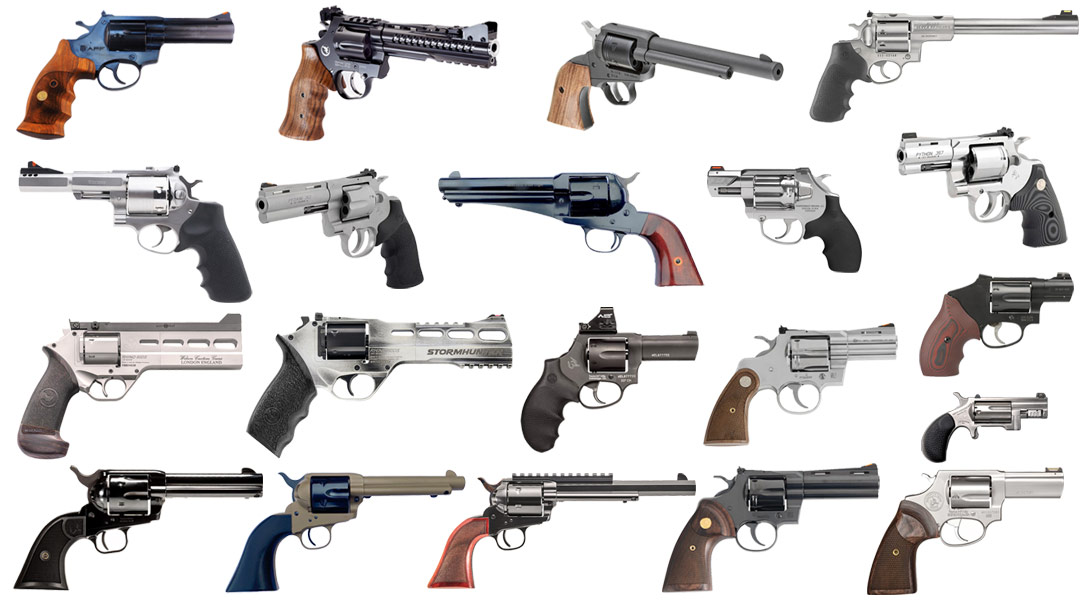
Materials And Finishes
Materials and finishes play a big role in the look and function of revolvers. They affect weight, strength, and how the gun handles wear and tear. Choosing the right material and finish helps protect the revolver and keeps it reliable for years.
Steel Variants
Steel is the most common material for revolvers. It offers great strength and durability. Carbon steel is strong but can rust if not cared for. Stainless steel resists rust and looks shiny. Some steels are hardened to resist scratches and dents. Each steel type balances toughness and maintenance needs.
Alloys And Composites
Alloys mix metals to make revolvers lighter without losing strength. Aluminum alloys are popular for carrying guns. They reduce weight and ease handling. Titanium alloys are even lighter and very strong. Composite materials combine plastics with metal for parts like grips or frames. These keep guns light and comfortable.
Coatings And Treatments
Coatings protect revolvers from rust and damage. Blued steel gives a dark, classic look and some rust resistance. Chrome and nickel plating add shine and strong protection. Modern treatments like Cerakote create a tough, colorful finish. These coatings make cleaning easier and help guns last longer.
Choosing The Right Revolver Style
Choosing the right revolver style is important for every shooter. Different styles suit different needs. Picking the right one helps with accuracy, comfort, and safety. This section explores key points to consider.
Purpose And Usage
Think about why you want the revolver. Self-defense, target shooting, or hunting need different styles. Some revolvers are small and easy to carry. Others have longer barrels for better aim. Match the revolver to your main use for best results.
Ergonomics And Comfort
How a revolver feels in your hand matters a lot. Grip size, weight, and balance affect comfort. Try holding different models to find what fits you well. A comfortable revolver helps you shoot better and reduces fatigue.
Budget Considerations
Revolvers come in many price ranges. Set a budget before you start shopping. Higher prices may mean better materials or features. Many affordable revolvers still offer good quality and reliability. Find a balance between cost and quality that suits you.
Frequently Asked Questions
What Are The Main Types Of Revolvers?
Revolvers are mainly categorized into single-action and double-action types. Single-action requires manual cocking before each shot. Double-action allows firing by just pulling the trigger. Both have unique uses and mechanical differences.
How Do Single-action And Double-action Revolvers Differ?
Single-action revolvers need the hammer to be cocked manually. Double-action revolvers cock and fire with one trigger pull. This makes double-action faster but often with a heavier trigger pull. Each suits different shooting styles.
What Calibers Are Common In Revolvers?
Common revolver calibers include. 38 Special,. 357 Magnum, and. 44 Magnum. These calibers offer varying power and recoil, catering to self-defense, hunting, and target shooting needs.
Are There Specialized Revolvers For Concealed Carry?
Yes, there are compact revolvers designed for concealed carry. These models are lightweight, small, and easy to conceal. They prioritize ease of carry and quick access.
Conclusion
Revolvers come in many types, each with unique features. Some have single action, others double action. Cylinder size and barrel length also vary. Knowing these helps choose the right revolver for you. They are simple, reliable, and classic firearms. Understanding the basics makes handling easier and safer.
Explore each type slowly to find what fits best. This knowledge builds confidence and skill over time. Keep learning and practicing for better results.
